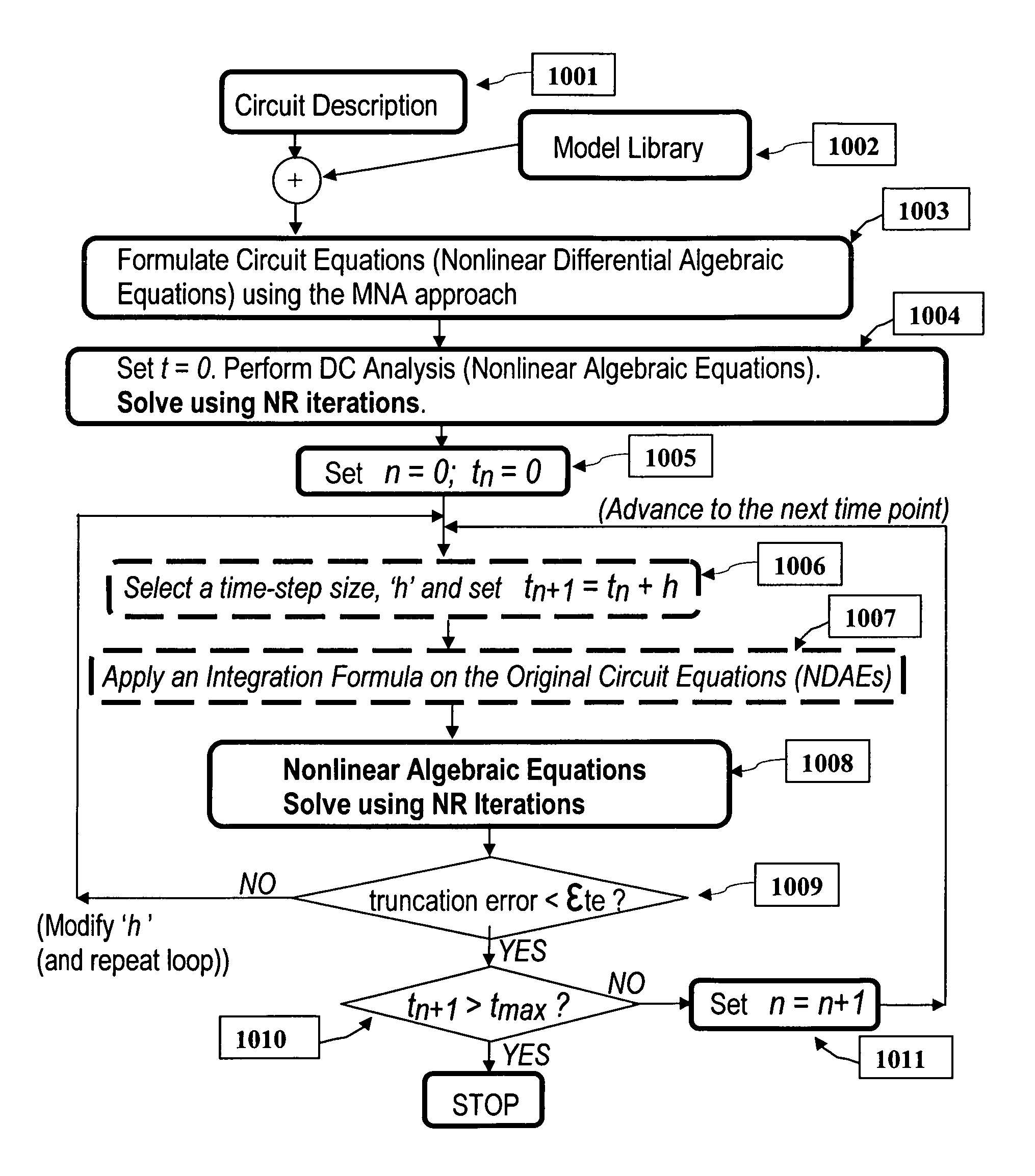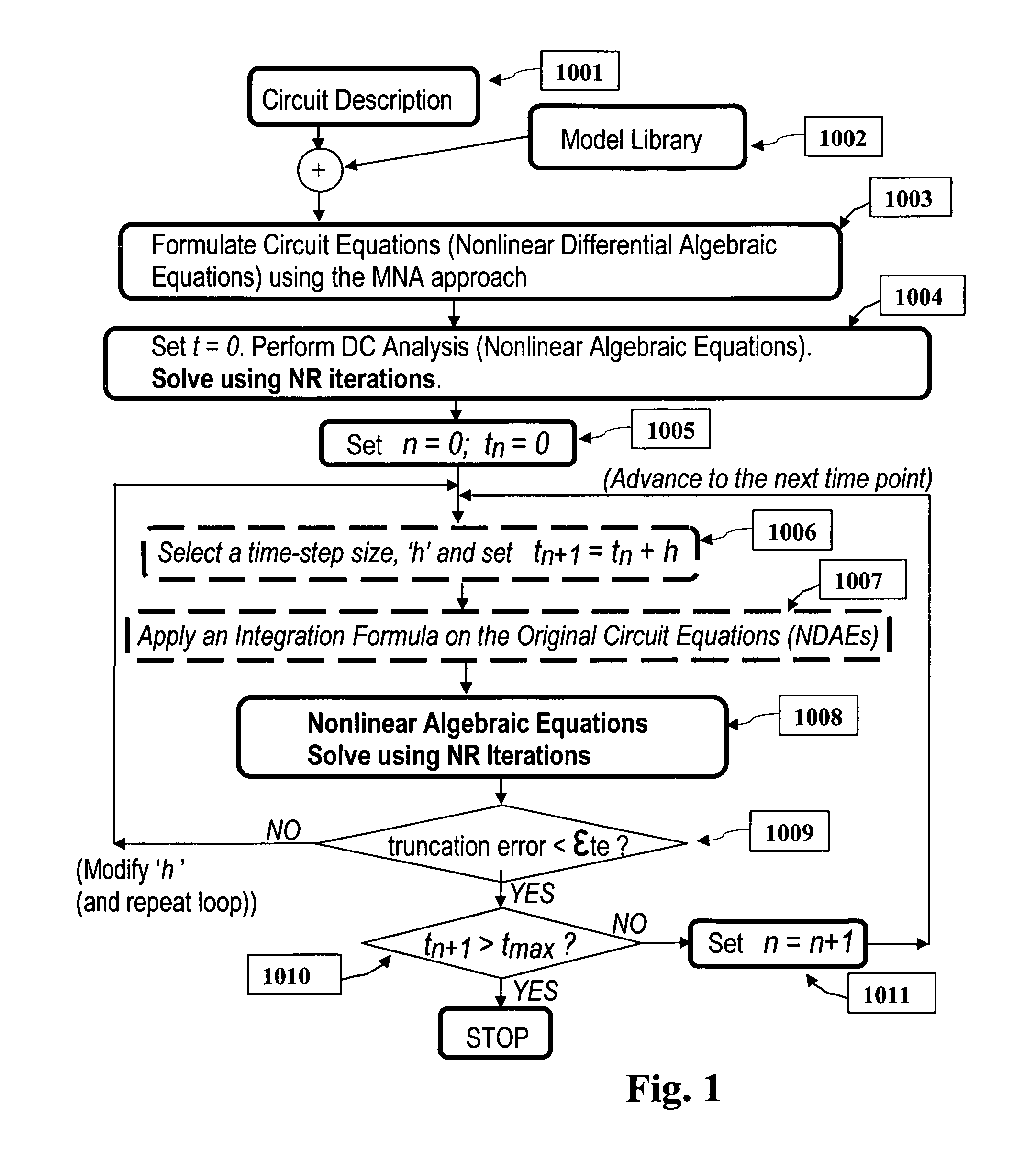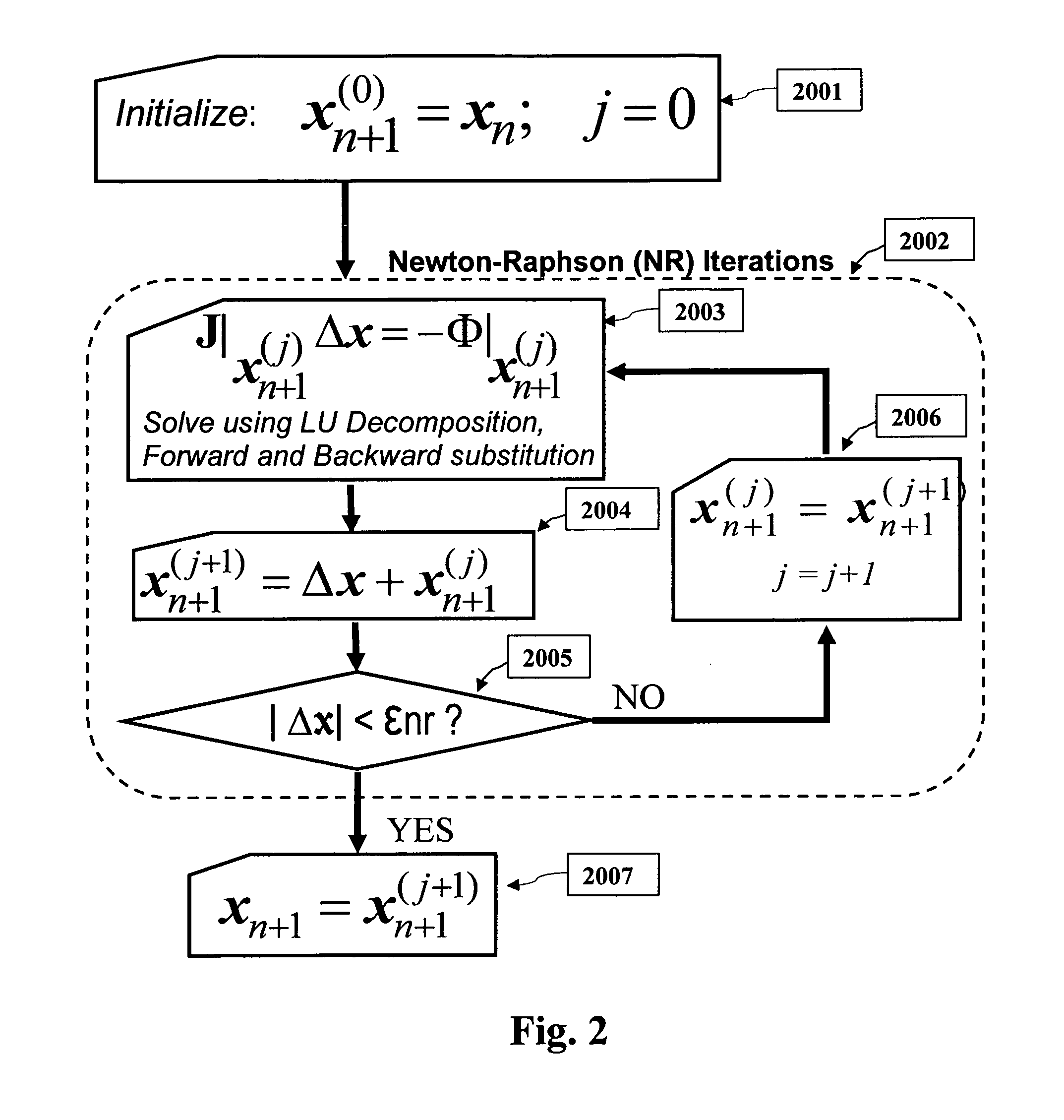Parallel simulation of general electrical and mixed-domain circuits
a general electrical and mixed-domain circuit technology, applied in the field of general circuit simulators, can solve the problems of high computational cost, high time-consuming process, step becomes a highly time-consuming process, etc., and achieve the effect of fast and accurate time-domain circuits
- Summary
- Abstract
- Description
- Claims
- Application Information
AI Technical Summary
Benefits of technology
Problems solved by technology
Method used
Image
Examples
first embodiment
[0051]The details of the first preferred embodiment of the new invention for transient analysis are outlined below.
[0052]First, construct the graph for the given circuit and identify partitions in the given circuit based on the circuit complexity and the number of processors available, such that the size as well as number of nonlinear elements is fairly distributed among the partitions, while minimizing the links between various partitions.
[0053]Subsequently, apply the node splitting at the intended partition nodes and form the corresponding subcircuits as well as the link vectors (which are purely binary in nature) representing the coupling between various subcircuits.
[0054]At each time step, solve for the original circuit using NR iterations as follows:
[0055]a) Do in parallel on different slave processors:[0056]a1) Represent / update each subcircuit in its companion form and the corresponding MNA matrices,[0057]a2) Solve each subcircuit (nonlinear) using LU decomposition,[0058]a3) C...
second embodiment
[0114]A serial simulator for analysis of linear / nonlinear time-domain circuit and mixed-domain formulations on a single processor according to a second embodiment is explained below.
[0115]As a feature of the second embodiment, the inventive concepts of the new invention are also exploited for fast and accurate simulation on a single processor. In this case, the partitions are identified and subcircuits are formed as per the first embodiment, using the companion form representation and node tearing. Equations (19) to (24) are constructed / updated / solved sequentially on a single processor. A preferred pseudocode for the second embodiment is given in FIG. 8, where the details of the variables and modules are similar to the ones described for the case of FIG. 7, except that the modules 8001, 8002 and 8003, are executed serially.
[0116]It is to be noted that, using the features of the second embodiment, in general leads to a better speed up on a single processor than running the original c...
third embodiment
[0117]The third embodiment provides for further enhancing the overall simulation speed-up by combining the merits of the first and second embodiments. According to the third embodiment, parallel simulation of a given nonlinear time-domain circuit is accomplished via a hierarchical partitioning. In this case, circuit is partitioned with subcircuits having minimal links and is solved using the first embodiment. In this case, while solving for an individual subcircuit on a particular processor, if the size of the subcircuit is still large, it is further partitioned and simulated exploiting the features of the second embodiment. The third embodiment is suitable for and yields better speed-ups when the first level partitioned subcircuits are still of large size and / or cause excessive links between subcircuits.
[0118]Further, as an alternative to direct multi-way partitioning, hierarchical partitioning can also be used to reduce the overall number of links among the subcircuits. In hierarc...
PUM
 Login to View More
Login to View More Abstract
Description
Claims
Application Information
 Login to View More
Login to View More - R&D
- Intellectual Property
- Life Sciences
- Materials
- Tech Scout
- Unparalleled Data Quality
- Higher Quality Content
- 60% Fewer Hallucinations
Browse by: Latest US Patents, China's latest patents, Technical Efficacy Thesaurus, Application Domain, Technology Topic, Popular Technical Reports.
© 2025 PatSnap. All rights reserved.Legal|Privacy policy|Modern Slavery Act Transparency Statement|Sitemap|About US| Contact US: help@patsnap.com



